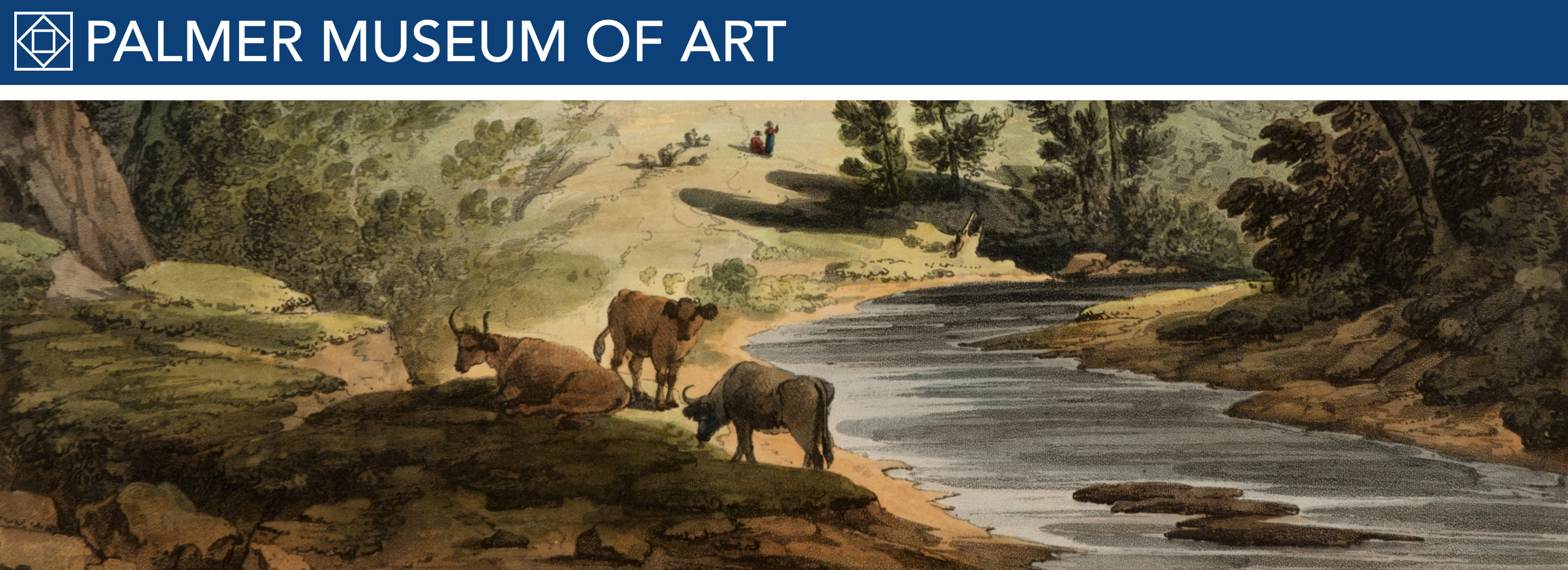Pennsylvania Scenery
Early Landscape Prints from the Tavern Collection
Pennsylvania’s natural beauty figured prominently in the development of America’s landscape tradition during the early years of the nineteenth century. As artists traveled the state in search of motifs, they recorded their impressions on canvas but also in print, which allowed their views to be more widely and immediately disseminated. Joshua Shaw’s Picturesque Views of American Scenery, a series of aquatints issued by subscription beginning in 1820, featured a number of depictions of the then-idyllic countryside just outside of Philadelphia. Two of these are included in Pennsylvania Scenery, as are several attractive landscapes from northeastern Pennsylvania, engraved after drawings by William Henry Bartlett for American Scenery; or, Land, Lake, and River, another subscription series initiated nearly a generation later, in 1837.
Philadelphia was a major publishing hub for the young republic, and so it should come as no surprise to discover Pennsylvania landscapes among illustrations from the nation’s first literary periodicals, such as The Port Folio and The Analectic Magazine. The Columbian Magazine, published in Philadelphia between 1786 and 1792, was especially attentive to the country’s natural splendor. It was the first serial in the United States to include original prints of American scenery, and often its editors had no need to look beyond the state’s borders for imagery suitable to exemplify the claim, made during its inaugural year:
The face of nature, throughout the United States, exhibits the sublime and beautiful, in the most exalted degree. In almost every part of this country, we are surrounded with objects calculated to inspire the most elevated conceptions of the imagination. Our mountains, valleys, plains, and rivers, are formed upon a great scale; the extent of the country itself is great; and the whole is rendered magnificently beautiful, by the creating hand of the almighty architect!
As awe-inspiring as the landscape was, artists depicting the vistas of Pennsylvania rarely shied away from including evidence of community and commerce, which, already in the early years of the nineteenth century, signaled that the state was well on its way to industrial prominence. Dwellings from single cabins to great cities are neatly tucked into the landscape. Rivers are either coupled with canals dug to enhance their navigability or decorated with ferries and bridges to expedite their crossing. Roads traverse mountains and rugged terrain for speedier passage by horse and cart. Tokens of civilization are commonplace, as if conquering the geography was as natural as nature itself.
All of the prints in this online exhibition are drawn from the Tavern Collection, initially amassed by Penn State alumni John C. O’Connor and Ralph M. Yeager to adorn their popular downtown State College restaurant. Important selections from the works on view at the Tavern were exhibited at the museum in 1980 under the title Pennsylvania Prints. The entire collection was acquired by the museum in 1986.
Pennsylvania Scenery was initially organized by the Palmer Museum of Art as an exhibition scheduled to be presented during the summer of 2020. The museum’s temporary closure due to concerns over the coronavirus pandemic precluded its showing at that time, so we are offering it as a digital companion to another Pennsylvania-themed exhibition, Field Language: The Painting and Poetry of Warren and Jane Rohrer, which is on view at the museum February 10th through April 25th, 2021. Viewers of Pennsylvania Scenery can find images of and information about each work of art in the show by visiting the "Exhibition" page. An overview of the entire exhibition, as well as a map featuring each scene’s location, can be found on the "Browse and View Locations" page.
We acknowledge the Haudenosaunee, Lenape, Shawnee, Susquehanna, and other peoples who came before as stewards of the land. As you look at these prints, we invite you to ponder your own relationship with the land, its long memory and many uses, and the sustainability of its future.
